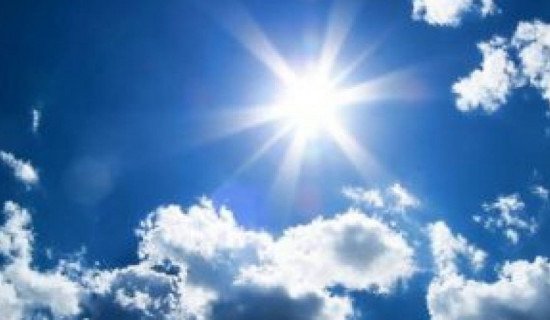- Saturday, 20 December 2025
Euro 6 Standards To Check Pollution
The government’s decision to enforce Euro 6 standards by implementing the new Vehicle Emission Standards 2082 has come into effect. This has been published in the Nepal Gazette. Accordingly, the new standards have been enforced on new vehicles imported after the publication of the Gazette. But vehicles imported through letters of credit and other modes of import before the date of publication of the Gazette will not be subject to the new standards. However, the existing light vehicles – two-, three- and four-wheelers – are not subject to the new standards; rather, the Euro 5 standards are still applicable to them. The new emission standards have been endorsed after years of delay owing to harsh objections on the part of automobile entrepreneurs.
Attempts were made in 2017 and 2021 to introduce the Euro 6 standards. The proposal was sent to the Council of Ministers, too, but was stalled amid growing protests by automobile entrepreneurs. With the implementation of the new standards, Euro 6 will apply to standard four-wheelers – cars, vans, microbuses, buses and heavy vehicles. However, tractors, agricultural machinery, tillers, dozers, cranes, rollers, excavators and other construction equipment are exempt from the new standards. Military vehicles imported on the recommendation of the Ministry of Defence are also exempt from the new standards. Nepal is planning to phase out Euro 3 and 4 vehicles.
Regulations
Nepal first introduced the Nepal Emission Standards 2056 after the implementation of the Environmental Regulations 2054. The standards were equivalent to Euro 1. The emission standards were upgraded to Euro 3 by implementing the Nepal Vehicle Emission Standards 2069. It was planned at the time to upgrade the standards to Euro 4 within two years, but to no avail. Euro 6 is the emission standards introduced by the European Union. As per the standards, limits are set on deleterious exhaust gases from vehicles. Such gases include mainly nitrogen oxides (NOx), carbon monoxide (CO), hydrocarbons (HO) and particulate matter (PM). The standards are stricter for diesel vehicles than for petrol vehicles, particularly regarding the emissions of nitrogen oxides.
The Euro 6 standards have been in force for vehicles sold in the European Union zone since September 2015. Vehicles with Euro 6 standards are required to enter low-emission and clean-air zones in cities. There is also Euro 6d, a further improvement over Euro 6 that includes real-time testing to ensure emission measurements are more realistic. It is not easy to manufacture Euro 6–6-compatible vehicles. For this, advanced technology is required. Vehicle manufacturers use sophisticated technologies like selective catalytic reduction (SCR) and exhaust gas recirculation (EGR). So Euro 6 vehicles are a bit costlier than Euro 5 vehicles. However, they are more eco-friendly.
The European Union is already working on Euro 7. These standards will most likely be stricter than Euro 6. The basic thrust of the standards will be to drastically retrench air pollution not only from exhaust gases but also from non-exhaust pollution such as brake dust and tyre rubber particulates. The Euro 7 standards are expected to come into force in 2026. The European Union first introduced Euro 1 in 1992. Since then, the Euro standards have been upgraded: Euro 2 in 1997, Euro 3 in 2001, Euro 4 in 2006, Euro 5 in 2011 and Euro 6 in 2015. Nepal has implemented Euro 6 a decade after its enforcement in European Union nations.
Most countries have adopted Euro 6 standards. India adopted BS VI (Bharat standards VI) equivalent to Euro 6 in April 2020. Likewise, China adopted China 6b, also equivalent to Euro 6, in July 2023. Nepal imports vehicles mostly from India and China. The vehicles being imported are compatible with Euro 5 and 6. However, imports of vehicles from countries that produce Euro 5 vehicles may have problems. The sudden announcement of the new emission standards has caught auto entrepreneurs unawares. They have taken exception to the new standards because they have little time to make arrangements for the manufacture or repairs and maintenance of such vehicles. The implementation of the new standards requires advanced technology, including sophisticated engines and software.
Repairs and maintenance also require high technology. Upgraded workshops/garages with sophisticated computerised systems and highly trained manpower are required. All this entails high investments. Vehicles compatible with Euro 6 may be costlier by up to 20 per cent. So it is consumers who will ultimately be hit by higher costs. Even two-wheelers will be costlier. It is estimated that there will be a hike of up to 10 per cent in the prices of two-wheelers compatible with Euro 5. Sensors and electronic components are costlier, which will push up maintenance costs. Further, additional investments will have to be made to impart training to mechanics.
Causative agents
However, 60 per cent of the two-wheelers already meet Euro 5 standards, whereas the remaining 40 per cent, compatible with Euro 3 or 4, will face problems. It may be noted that Nepal jumped from Euro 3 to 5 by bypassing Euro 4. Nepal is facing air pollution. Kathmandu, where the bulk of the country’s transport is concentrated, has been depicted as one of the most polluted cities in the world. Exhaust gases are one of the causative agents of air pollution. So the government has hastened to enforce the new emission standards even amid outcry by auto entrepreneurs, who have urged the government to extend the transition period for up to three months to make preparations for the shift.
They have also argued that the new standards will entail a higher financial burden, which may overshadow the ecological benefits. However, the government will not budge from enforcing the new standards. In a sense, the enforcement of the new standards has shown that the government is paying adequate heed to concerns over global environmental degradation.
(Maharjan has been regularly writing on contemporary issues for this daily since 2000.)

















